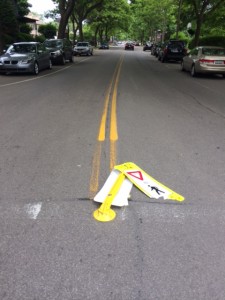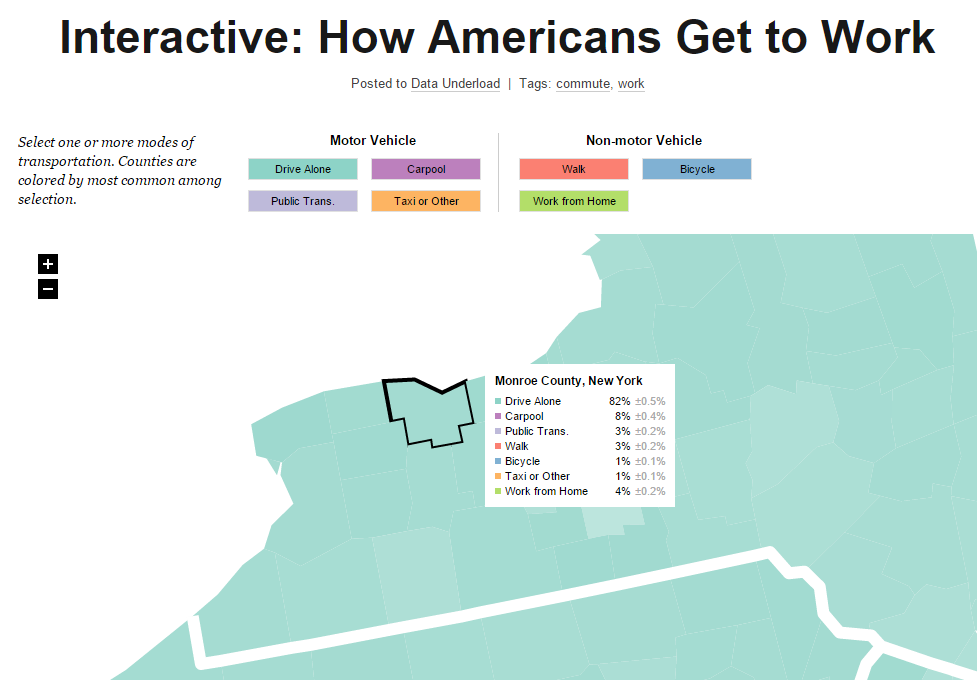 [Guest post by Pete Tonery.]
[Guest post by Pete Tonery.]
For years I was hooked on science fiction. I liked short stories, Azzimov, Bradbury and their contemporaries. I liked Phillip K. Dick. Dick was extraordinarily prescient. It was his uncanny view into the future that resulted in so many of his stories being made into modern films: Blade Runner, Total Recall, Imposter, Minority Report and the Adjustment Bureau, to name a few. The prognostications of Sci-Fi often come true.
Okay, that’s my set up and my excuse.
I was reading about the City of Rochester’s recent meetings on the new Master Plan for the city center. There have been proposals floated and discussed for making sections of downtown car-free and for filling in part of the inner loop. There is a growing respect for concepts that promote walkability, biking and the quality of life when automobiles are absent.
However, some ideas will make getting around the city center more difficult and perhaps stratifying downtown neighborhoods because people won’t, or can’t, walk very far. I came to these conclusions while looking at a city map. I was concentrating on the city center as defined by the boundary of the Inner Loop. I learned that it is 2.68 miles from one end to the other along Main Street. This is much too far for many people to walk. If a grocery store settled on the east end it would be very difficult for west-enders to walk there, especially in winter. The store would stratify rather than unite.
As I stared at the map looking for solutions my synaptic spider web sent down some ideas that are perhaps more sci-fi than practicable- but what the hell.
I recognized that there are some natural lanes for simple mass transit. First, a simple mag-lev system would run the circumference of the Inner Loop. Connected to it would be N/S lanes along State/Exchange, Clinton and Chestnut streets. Running E/W, and dividing the loop right through the center, would be a main street line.
Mag-lev system exists all over the word. They’re best known as Japan’s and Europe’s high speed bullet trains that can travel at 200 miles per hour. Downtown Rochester wouldn’t quite need that. 5 or 10 would be sufficient.
The system would use unmanned cars that seat perhaps 10 to 25 people. The cars would be recycled plastic and invested with solar power for door operations, heat and energy plus video for both interior and exterior safety and security. The trains would pick up passengers at an indefinite number of stops. Utility poles all along the route would feature a “call” button. In the absence of a call the cars would continue to patrol.
Extra cars could be automatically added from the bus station as demand requires, such as during a festival. Main Street might feature the only bi-directional service, otherwise the cars travel only clockwise; east bound to the north, westbound to the south. The furthest distance to a car going in your direction would be from Main Street north or south. Engineers could figure all that out.
These cars would be simple, clean and silent. Folks living a mile or more from the grocery store could get to it easily in bad weather. The threat of stratification would be eliminated. Families traveling downtown with small children would ride when the walk became too much. Event parking could be planned for outside the loop. Automobiles could be prohibited from the Ciy Center altogether.
I began this article by speculating that some aspects of this concept might be in the realm of sci-fi. They are not. It turns out that on the campus of the University of West Virgina in Morgantown there exists a system very close to what I have described. It was built in 1975.
Here is a brief description, “On a typical fall and spring semester day, 15,000 passengers will travel between the five stations along an 8.7-mile track, riding in 71 self-propelled cars that travel at speeds of up to 30 mph. It’s easy to see why the people mover, as it is sometimes called, is so popular. With a wait time of just five minutes or less, as many as 20 passengers at a time pass the traffic congestion on the narrow streets below.”
Read all about it here: Governing.com: Personal Rapid Transit System
For a moment I thought I might be a visionary like Phillip K. Dick; so much for my vanity. Now, finding a way to persuade the authorities to consider such a project— that might be the real sci-fi challenge.






No Comment